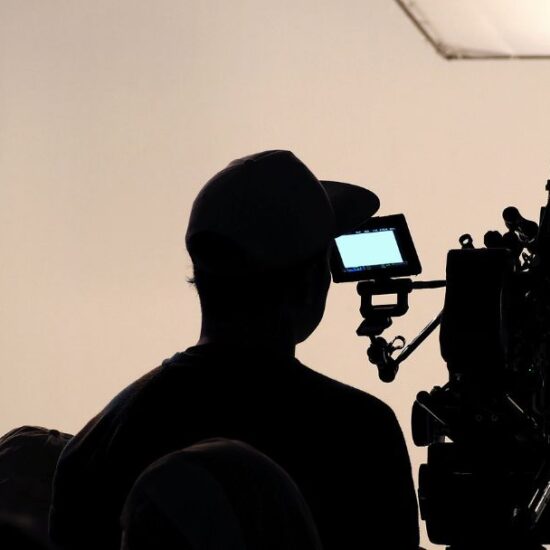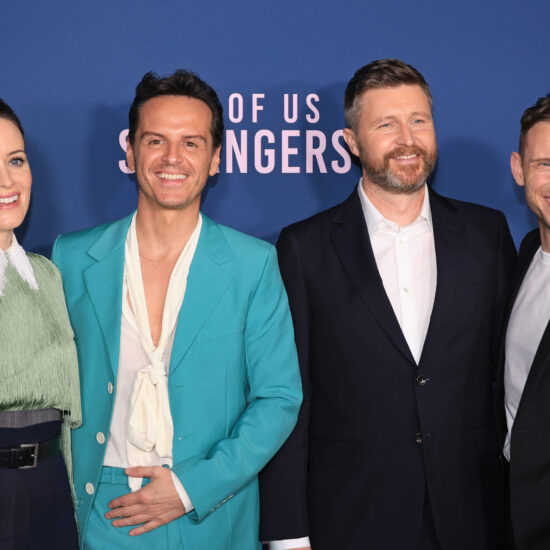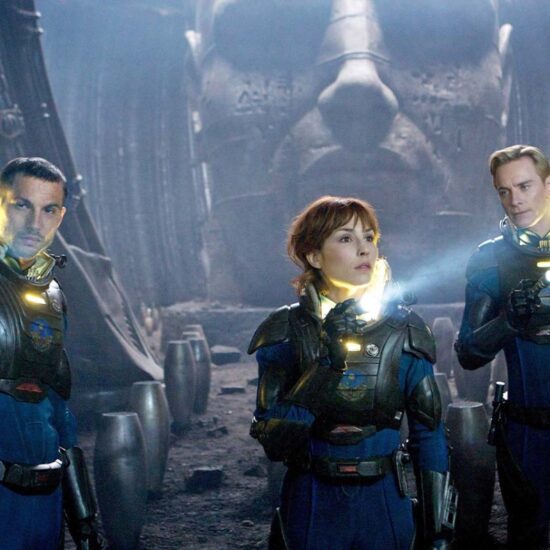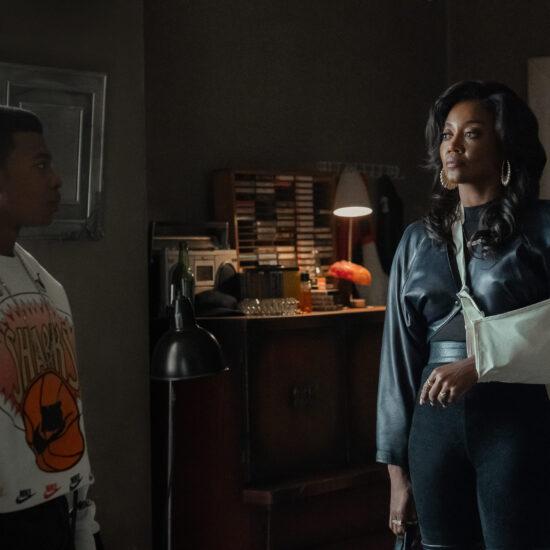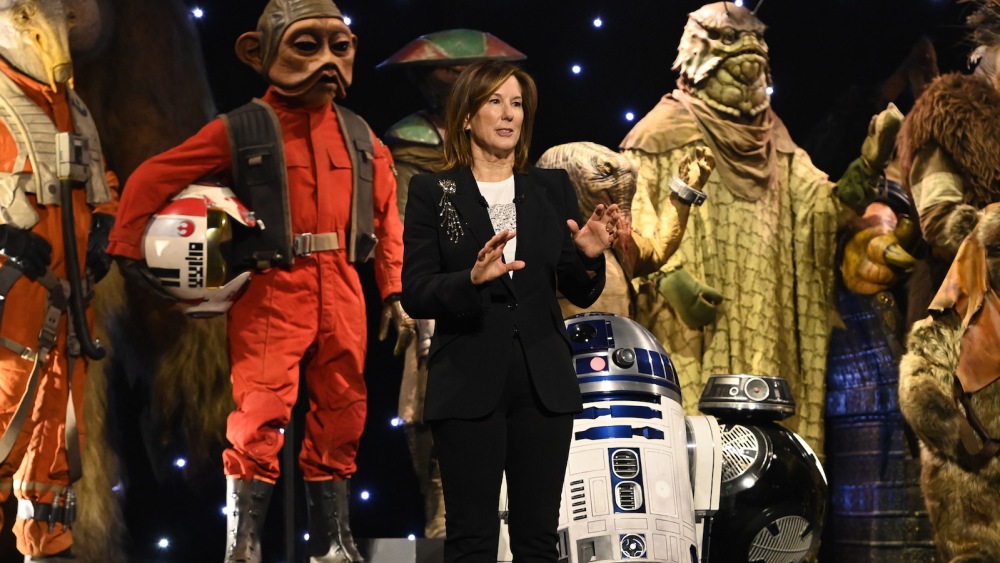
The past, present and future of Star Wars was on ample display on Friday at the Star Wars Celebration fan convention, as Lucasfilm unveiled the most robust look yet at the company’s plans for the hallowed franchise. As studio chief Kathleen Kennedy revealed three new feature films and first looks at four upcoming TV series, Lucasfilm made clear it aims to test just how far it can stretch the Star Wars galaxy: creatively, logistically and even historically.
Starting with “The Phantom Menace” and concluding with “The Rise of Skywalker,” the previous nine “Star Wars” movies have all taken place within a roughly 70-year timeline, straddling the climactic Battle of Yavin in “A New Hope” that has served as the official fulcrum point for the franchise for six decades. Every live-action and animated spinoff TV series has unfolded within that timeframe, including the shows launched on Disney+: “The Mandalorian,” “The Book of Boba Fett,” “Andor,” “The Bad Batch” and the upcoming shows “Ahsoka” and “Skeleton Crew.” (“Visions,” an animated anthology series launched in 2021, exists outside of Star Wars canon.)
Between the hordes of Star Wars tie-in novels, comic books and video games, however, hardcore fans know that the full history of the franchise stretches over tens of thousands of years, and Lucasfilm intends to begin exploiting that vaster narrative landscape in live-action, starting with “The Acolyte.” First announced in 2020, the Disney+ series breaks brand new ground on two fronts: It’s set roughly 100 years before the events of “The Phantom Menace,” and it will track the rise of the Sith during the waning days of the High Republic.
“I really wanted to delve into the Star Wars universe and tell the story of this entire world that I love so much from the perspective of the villains,” creator and showrunner Leslye Headland said during the presentation on Friday. “The first thing that became apparent was that we’re going to have to set this between the High Republic and the beginning of the prequels. Not only because it’s such an exciting part of the timeline, but also because this is when the bad guys are outnumbered. They are the underdogs.”
Later, Kennedy revealed that director James Mangold (“Logan,” “Indiana Jones and the Dial of Destiny”) will be directing a feature film set a whopping 25,000 years before the Battle of Yavin, in what amounts to an origin story for the Force, the singular metaphysic thread that binds together the entire franchise. Talking with Variety after the presentation, Mangold evoked the kind of Biblical epics that dominated Hollywood in the 1940s and 1950s.
“When I first talked to Kathy Kennedy about it, I said, ‘I just see this opening to make kind of a ‘Ben-Hur’ or ‘Ten Commandments’ about the birth of the Force,’” Mangold said. “The Force has become a kind of religious legend that spans through all these movies. But where did it come from? How was it found? Who found it? Who was the first Jedi? That’s what I’m writing right now.”
Both of these projects push well beyond what audiences have come to think of as Star Wars, not just in terms of when they’re set, but in what they’re about: No Skywalkers, no Empire, focusing on characters who live within darkness and chaos. For the core fandom, it’s enormously exciting, filled with the promise of bringing to life time periods that have only existed on the arcane periphery of the franchise. But Star Wars became a decades-spanning pop-culture phenomenon not because of the dense sprawl of its mythology, but because of the imaginative spark of its storytelling and the lovable verve of its characters.
Getty Images for Disney
Already, the tension between those impulses — delighting the core fanbase while engaging much broader casual audience — has exposed some telling cracks in how far Star Wars can stretch itself. For its first two seasons, “The Mandalorian” was a down-the-middle-of-the-plate adventure show, tracking the growing bond between its taciturn titular character and his adorable ward Grogu as they explored galaxy together. Season 3 of “The Mandalorian,” however, has back-burnered that relationship in favor of diving deep into the cultural and religious lore of Mandalore and the diaspora of warriors struggling to survive after the fall of the planet.
Audience response has been muted to outright hostile: Casual fans have bemoaned having to follow increasingly abstruse mythology (Mythosaurs! Darksabers!), while hardcore fans have blasted more populist storytelling choices, like casting Lizzo, Jack Black and Christopher Lloyd in guest star roles that, to some, felt distractingly out of place within the larger story.
Those kinds of reactions will only grow louder and messier as Lucasfilm continues to expand the definition of what a Star Wars project can be. “Skeleton Crew” will be the first Star Wars title with a cast made up almost entirely of children (alongside Jude Law), while “Ahsoka” will pull extensively from the animated “Clone Wars” series that first introduced its title character (played by Rosario Dawson). Both of those shows, along with “The Mandalorian” and “The Book of Boba Fett,” will then climax in an upcoming feature film directed by Lucasfilm veteran Dave Filoni — a clear attempt to bring the Marvel Studios model of mutli-threaded franchise building to a galaxy far, far away.
That means that each of these shows must seed storylines into the others, which is how “The Book of Boba Fett” wound up spending two episodes focused on resolving the massive Season 2 cliffhanger from “The Mandalorian.” On Friday, Lucasfilm hinted that the seaweed-y pirate Gorian Shard from “Mandalorian’s” third season will show up on “Skeleton Crew,” and it appears the Season 3 finale of “The Mandalorian” will set up the major conflict on “Ahsoka.” Even “Andor” — the show that has, to great acclaim, set itself apart from all the other Star Wars series, narratively and creatively — isn’t exempt: Rebel leader Mon Mothma (Genevieve O’Reilly) will appear on “Ahsoka,” set roughly a decade after her run on “Andor.”
All of these intertwining storylines leaves the overall feeling that these aren’t individual shows as much as they’re all one big “Star Wars” series with different logos attached. That’s music to the ears of Disney executives who need a constant feed of content to keep Disney+ subscribers on board, but it’s an increasingly daunting prospect for anyone dedicated to keeping up with it all.
Meanwhile, Lucasfilm is also focusing on the literal future of the franchise by bringing Daisy Ridley back to reprise her performance as Rey from the sequel trilogy of films, as she builds back the Jedi while facing down a new threat. The studio is calculating that, despite widespread antipathy for “The Rise of Skywalker,” audiences are keen to follow Rey’s story into uncharted narrative territory.
In director Sharmeen Obaid-Chinoy, Lucasfilm is also banking that the Oscar-winning documentarian — who has never directed a live-action narrative feature — is the right filmmaker to forge Star Wars into a new horizon.
“I’ve spent the better part of my life by meeting real heroes who are overcoming oppressive regimes and battling impossible odds,” Obaid-Chinoy said on Friday. “I think that’s the heart of Star Wars. And that’s why I’m attracted to the promise of a new Jedi order and I’m attracted to the idea of immersing myself in a Jedi Academy with a powerful Jedi Master.”
The director then brought Ridley to the stage, to thunderous cheers.
Clearly overwhelmed, Ridley had only a few words to say: “I’m very thrilled to be continuing this journey.”
Lucasfilm hopes audiences will follow.
Amon Warmann contributed to this story.









